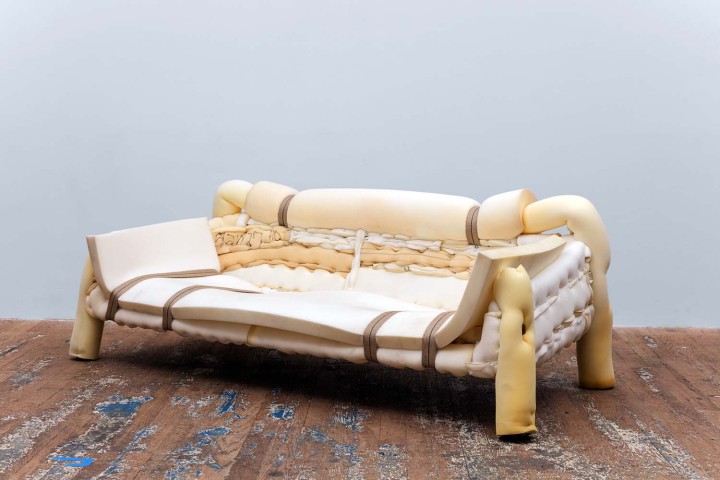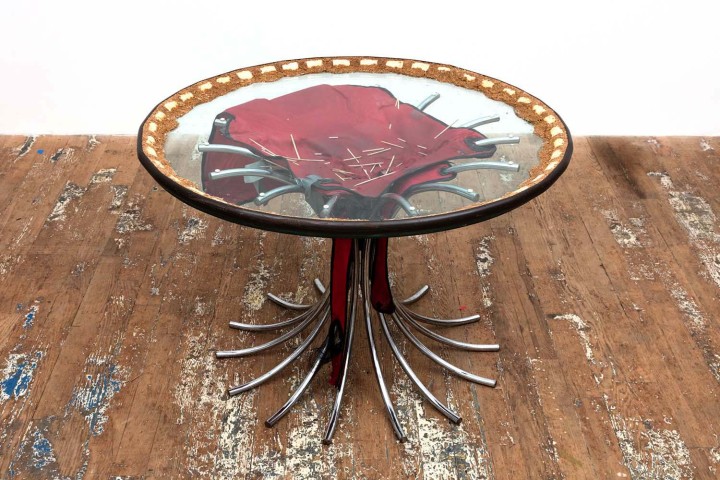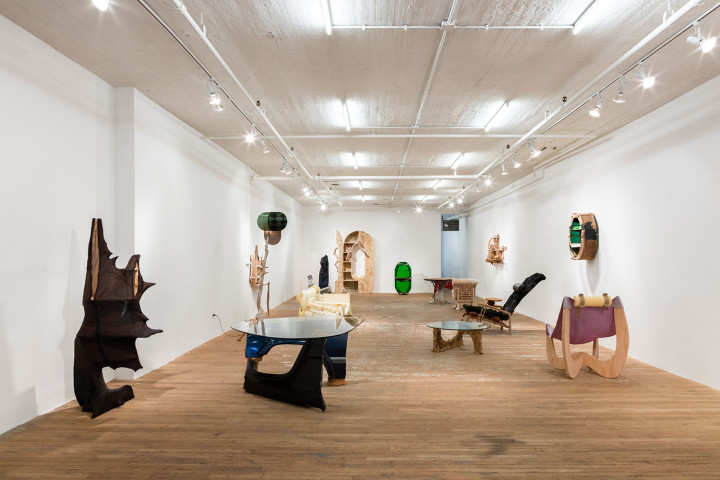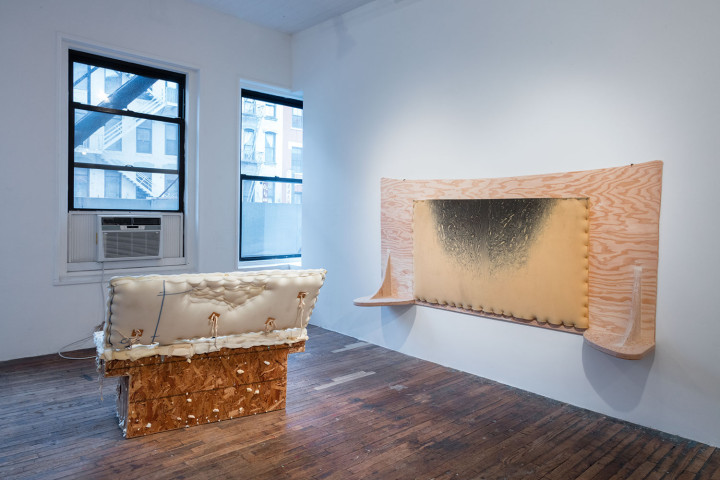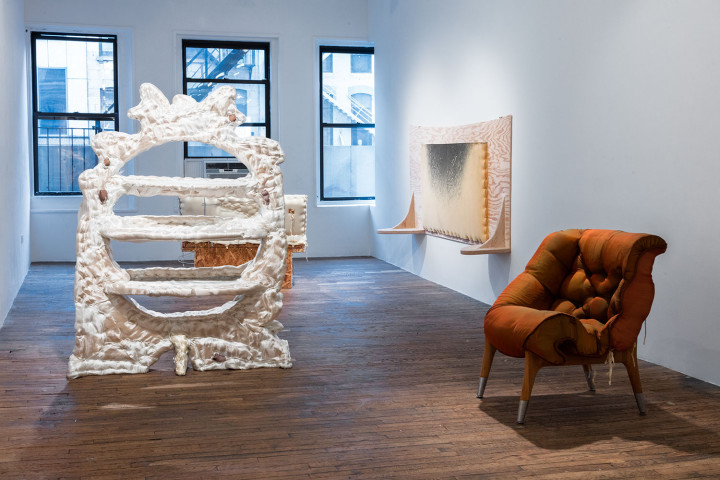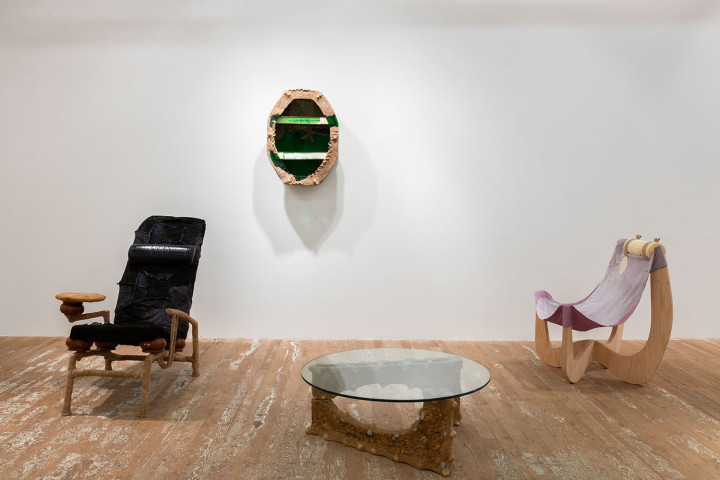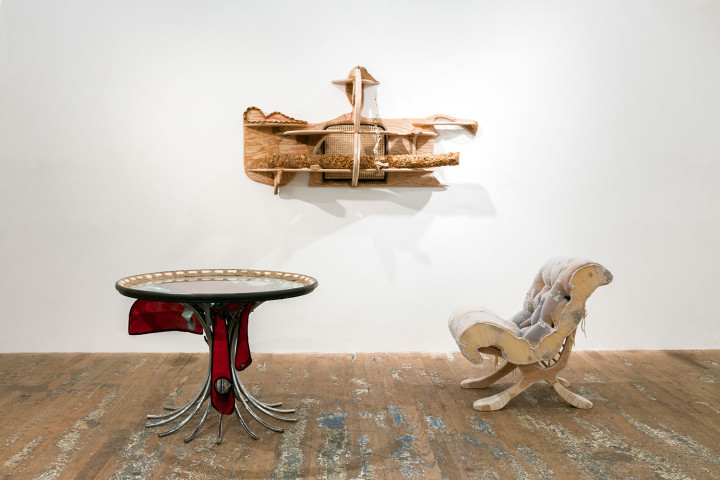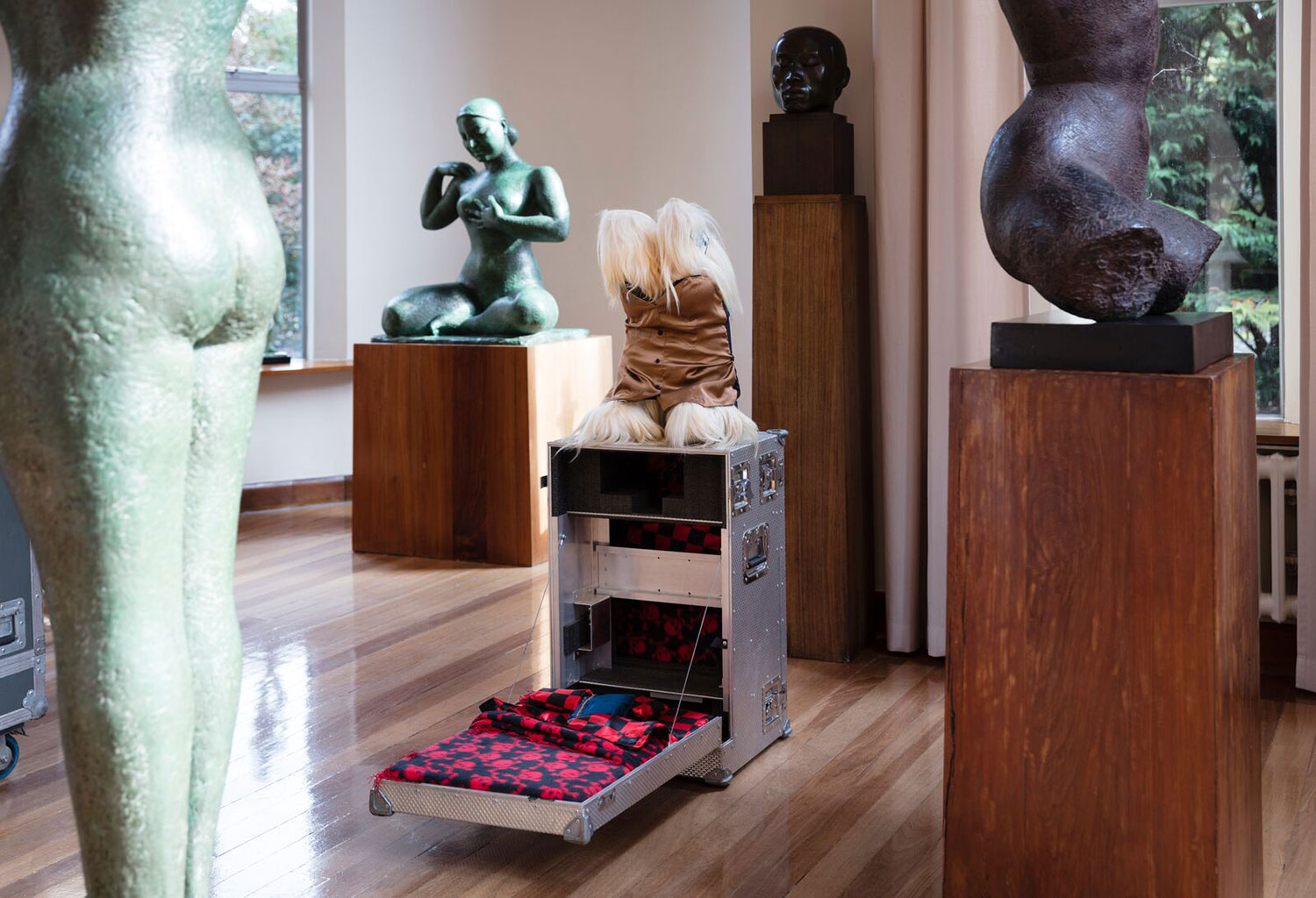Anyone Knows How It Happened (Headboard for One) (2016), is the most formally straightforward work in Jessi Reaves’s solo exhibition at Bridget Donahue: two shelves flank a large sheet of plywood with a piece of raw foam stapled bottom-center.
In spite of the candor of the presentation and plainspoken materials, Anyone Knows… absorbs a full abécédaire of art, design, and other vocabularies. The shelves are surreal, biomorphic protuberances; the headboard distorts International Style’s industrial planarity; the staples inscribe medieval crenellations; and a crafty faux-marble swirl decorates the foam. Or it’s trussed dolphin fins, John Chamberlain’s foam contortions, oyster lips, and a bad reaction to an oil spill. The title’s bare-all evocation (and possibly exaltation) embodies the spirit of Reaves’s furniture-sculptures. With basic, short-shelf-life materials, she imbues her Frankenstein-forms with a life-span, and like the monster, they reveal the inscrutable desires—exotic, romantic, abject and ecstatic—behind the dual acts of classification and use.
The remainder of the exhibition is a showroom display of shelves, chairs, couches, cocktail tables, a lamp and an armoire. Viewers are invited to sit on a few of the pieces, which affects the try-it-out comforts of furniture retail, but the experience of any individual work playfully warps the scenario. From its exterior, the use of Night Cabinet (Little Miss Attitude) (2016), is not immediately apparent. But, if one unzips the semitransparent silk bodysock, keys and other valuables can be safely stored on the shelves that comprise its spikey internal skeleton. Night Cabinet undresses intention, its purpose performing a burlesque between object and observer.
Twice Is Not Enough (Red to Green Chair) (2016), is upholstered in iridescent silk, which fluctuates along a chemical-bath gradient of red, green and orange. A square edge suggests it was cut from a loveseat, and its overstuffed plush renders its ad-hoc and unnaturally tumescent appearance pregnant with further upcycling reinterpretations. It is tempting to relegate Reaves’s furniture-sculptures to art’s systems of critique and value, but their generosity, as well as their ironies, traffic just as potently (and perversely) in other function-oriented contexts. Within Reave’s punk theatricality, there is no passive service; her furniture-sculptures free the desire to define, and let it run its course.


